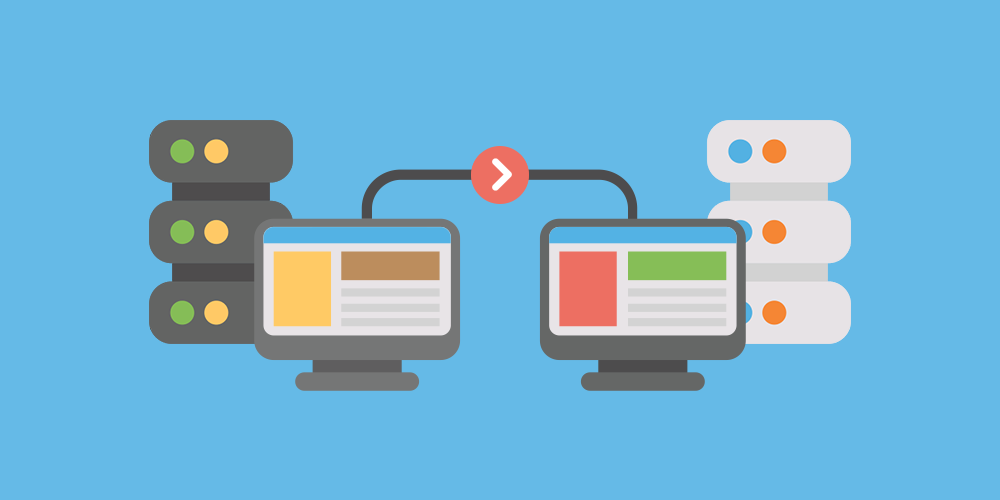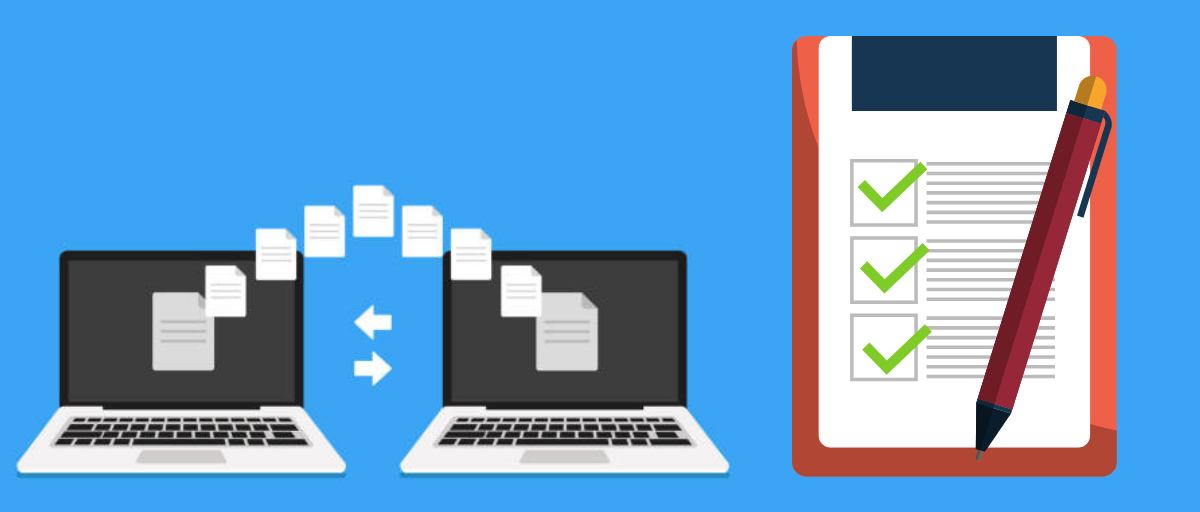Website Migration
Website Migration is a migration process that includes all the steps taken to avoid or minimize traffic loss while migrating a website for any reason. There may be reasons such as the necessity of domain change, changes in the URL structure, and Content Management System (CMS) changes. As you transfer your site, you also change what search engines know about your website and the metrics they apply to it to determine your ranking. In a nutshell, when you change your URLs and website content, you are impersonating a new one. For this reason, to protect your SEO reputation and not lose your traffic and conversions, you should take planned steps and not skip any point during the process. Besides, remember that although almost every mistake made can be fixed later, small details that are overlooked can prison you in a difficult place to recover afterward.
Important note: Before and during the migration process, every department related to the site and users should be notified to prevent victimization and maintain stronger communication.
Important note II: Back up the latest version of your website in case of any errors or mistakes that might occur during the process.
As Screpy experts, we have covered website migration and the steps you need to be careful about it.
Possible Losses During Site Migration
During the migration process, you may encounter some unintended scenarios. We have listed three possibilities for you.
1. Even for a certain period of time, your site may not acquire as much natural user traffic as before.
It’s not the worst-case scenario for you, but it’s something that can break your spirit. If website migration takes too long, users may give up on your website and begin to shop from your competitors. Or, even if it fails technically and does not work properly, it is inevitable to experience traffic loss until it is fixed.
2- You may experience “sale-loss” until your site is fully operative again.
Whether you have a personal or commercial website, you have to accept the amount of sale-loss you will experience during the process for a while. The important point here should be not to allow the domino effect after experiencing the loss and to reach the targeted-sale-point.
3- Data loss may occur during the migration process.
Data loss may occur during the migration process due to technical problems and errors during installation.
Things to Consider Before Starting the Website Migration Process

Website migration requires work that focuses on every detail since it may harm your business unless completed properly. Therefore, each process should be well-planned and calculated before taking a step to avoid any undesired incidents. Considering how fragile previous SEO studies conducted on your website, website promotions, link buildings, and backlinks you have got, you should handle website migration as you treat a baby.
a) Planning
Professionalism requires setting the work by estimating how long the site migration will take and when the site can be active again. As Screpy experts, we would like to remind you that even a minute of misdirection can cause a decrease in business volume and harm your reputation. What’s more, this is more likely to happen if you have a large audience.
b) Being Aware of What You Win and What You Lose
During the site migration process, you should not leave room for any surprises. Knowing which step will result in a profit or which will bring harm is extremely important to evaluate the business from a realistic perspective.
c) Information and Responsibility
Repeating the part we mentioned as Important note II at the beginning of the article can save lives. Whether running a small or a website at an enterprise-level, you need to keep both users and every unit involved in your website aware of the situation. In addition, it is entirely your responsibility to inform your customers and inform them about the details in order not to place them in the victim position.
d) Deciding When To All Aboard
For the ideal period for the migration, it would be wise to choose the days or times when your normal traffic is less intense. The possible quietest period is usually between 12.00 and 6.00 a.m.
1. Website Migration Preparation

In the first place, you should check all the SEO-related elements and URL structure on your site. Knowing these will put your progress on a solid foundation during migration. You should also check the factors below:
- Website hierarchy
- Domain
- Folder structures
- Meta tags
- Heading tags
- Internal links
- And lastly, you should check all the contents your website has.
In short, you need to take an x-ray of the entire site. In addition, there are two more factors you should check to avoid problems with Google due to migration:
- How many of the pages are indexed by Google
- robots.txt file and sitemap
1. a) Backup and Task Distribution
It is important to keep the visitor data of your website. You should categorize the pages with the highest traffic and visitor queries so that you can distinguish them later.
Of course, in order to get through this process in the best way, you should plan the transportation and distribute the tasks. Doing this will allow you to move things more clearly and without errors.
1.b) Crawl Analysis
URL mapping is the initial point of crawling a website. To acquire all URLs from your domain, you should scan your website. There are some tools you can use for crawl analysis, such as Moz Pro and ScreamingFrog.
Crawl analysis helps you decide which content and internal links should be prioritized for a better, reflective, and new URL.
1.c) Record Benchmarks
As you move your website to another, you can lose the data analytics of your website that is being migrated. However, you cannot let this happen since they will be valuable for later comparisons.
Review your website’s favorite pages and check your analytics of visitors’ behavior. Doing this will help you to get new ideas during the design of your new website.
2. Migration Process
Migration is the process of moving everything your website has, along with URLs, to the new web address. In addition to the URLs, your site’s content, robots.txt file, and sitemap are moved to its new address.
2.a) URL Migration and Mapping
Thanks to the backlinks and authority, you do not want to lose the SEO reputation that your old website holds. Therefore, your migration strategy must also include mapping URLs. Otherwise, you will get serious damage in terms of SEO.
To map the links, you can create a spreadsheet (excel file) with columns, one with the old URL and the other with the new URL, where Each URL is mapped to a relevant address.
2.b) 301 URL Redirects

Because your URLs change during the migration process, you should redirect Google and users from your old URLs to your new URLs. So, you should set up 301 URL redirects so that the old-new URLs become related to each other. Doing this will increase the user experience compared to 404-page faults and prevent your website from any harm due to SEO. A 404-page fault means “I’m dead now” to people and Google, while 301 URL redirects guide people to the new address you just migrated to.
2.c) Sitemap
Search engines recognize new pages through XML sitemaps. Therefore, make sure that there are no errors in your sitemap. Next, you also need to submit the sitemap to Google Search Console.
2.d) Meta descriptions
The meta content on each migrated page should continue to live on the new page, including page titles. Also, each page should include optimized page titles and meta tags.
2.f) Visual Contents
While moving visual contents to the migration point, you should ensure that the content moved should have the same name in the old and new locations. For example, if your old image’s name is anexampleforyou.com/image/screpy-1.png, the name should maintain as screpy-1.png in the new version. After that, you can redirect the URL through the 301 URL method.
3. Google Search Console and Google Analytics

We can take a break from migration and settle a bit because, as Screpy experts, there are two important things we want to talk about:
- The first is Google Search Console. Thanks to GSC, you can get information about how Google crawls your website. Also, GSC is very important to get information about how Google indexes and ranks your website.
- The second is Google Analytics. Google Analytics provides very realistic data about the status of your website, thanks to the real-time analysis report it offers with Google Tag Manager. For this reason, you need to make sure that these two are integrated correctly on your website and are collecting data.
4. Towards the End of Migration
After the migration process is over, the content on your new website must be within the framework of SEO rules. In particular, it is vital for your ranking to check the factors over and over again we have mentioned below that can affect your SEO ranking:
- URL structures
- Content hierarchy
- Internal links
- Canonical links
- Headings
In short, the successful completion of all SEO processes is necessary not to lose user traffic.
Also, before you make your new website available to users, you should check it out in a test site environment. However, one important detail should not be overlooked here. That is, search engines should not index the test website in which your website is being adjusted. Until your website is “ready-to-go” and the URLs are perfectly mapped, search engines shouldn’t index you.
4.a) Check Robots.txt File
Through robots.txt files, search engines become aware of which pages they should not crawl. However, they cannot distinguish which pages should not be indexed. For this reason, you need to make sure which pages are crawled by checking the robots.txt file. It is so vital since your important pages might not get crawled.
4.b) Update Your Backlinks
You can visit Search Console, a Google tool that you can use for backlink control. Thus, you can see the websites linking to your site so that you can update the backlinks and not lose your backlink value.
4.c) Check Your Performance
After the website migration is done, you should continuously monitor the traffic and ensure that the redirects are working correctly. You should evaluate factors such as user engagement, keyword ranking, and traffic to your website by comparing the benchmarks of the old website you currently hold with the performance of your new website.
4.d) Don’t Forget Mobile Compatibility
Before indexing your website, search engines check if your site is mobile-friendly. Maintaining the mobile-friendly nature of your website after the migration is over prevents your website from losing rankings.
Now we are going to answer frequently asked questions about website migration.
FAQ
How Long Does It Take To Migrate A Website?
The answer to the question will vary depending on the size of the website to be migrated and the details of the migration project. However, under normal circumstances, the process is completed within days or a week. Also, if you have additional plans in mind, this process may take longer.
Can I Migrate My Website All Alone?
Technically, yes, but if we’re honest, it’s almost impossible if you don’t have experience or knowledge. Website migration is a very complex process and requires technical knowledge, patience, and concentration. For this reason, it is always more logical to deal with a professional rather than dealing with this process on your own.
What Are The Common Website Migration Mistakes?
Common mistakes made during the website migration process include poor planning, lack of strategy, unfixed bugs, insufficient budget, no testing stage, and steps without consulting.
What Should I Do As Soon As Web Migration Ends?
You should check and ensure everything is working as intended, including the robots.txt file, top pages canonical tags, and top pages redirects.
What Are The Tools For Website Migration?
You can use Deepcrawl and Screaming Frog for the crawling process, SEO Radar, and Lighthouse to monitor your website.
Conclusion
Website migration is a process that provides more than revenue and reliable natural traffic to a website. At the same time, it requires a rough path to walk along that includes fragile and complex steps such as content migration, URL matching, backlinking, etc. If done right, it can put you in a better position than before. However, when done incorrectly or incompletely, it may cause serious damage to your website and your business. For this reason, you should plan the process wisely, determine the weaknesses and strengths well, and not take a blind step.
Website migration is a very challenging process that is carried out for various reasons, such as domain and CNS change.